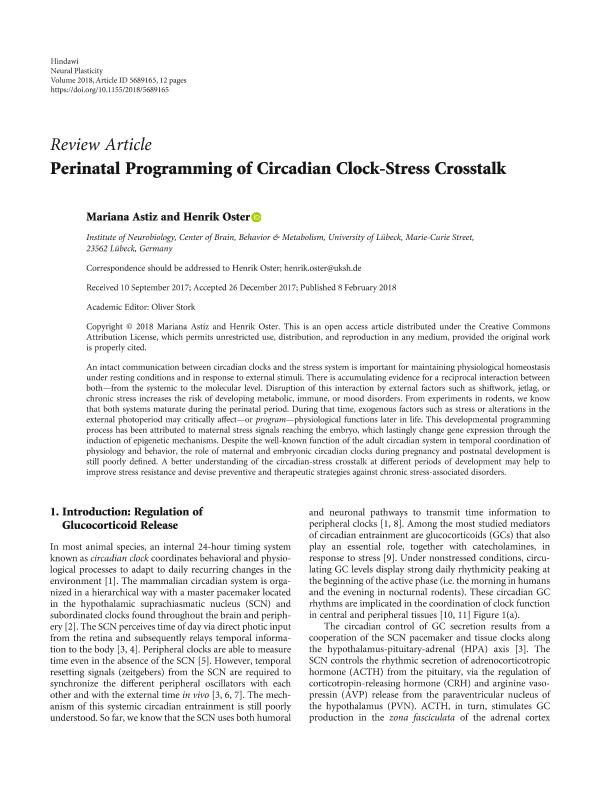Artículo
Perinatal Programming of Circadian Clock-Stress Crosstalk
Fecha de publicación:
02/2018
Editorial:
Hindawi Publishing Corporation
Revista:
Neural Plasticity
ISSN:
2090-5904
e-ISSN:
1687-5443
Idioma:
Inglés
Tipo de recurso:
Artículo publicado
Clasificación temática:
Resumen
An intact communication between circadian clocks and the stress system is important for maintaining physiological homeostasis under resting conditions and in response to external stimuli. There is accumulating evidence for a reciprocal interaction between both - from the systemic to the molecular level. Disruption of this interaction by external factors such as shiftwork, jetlag, or chronic stress increases the risk of developing metabolic, immune, or mood disorders. From experiments in rodents, we know that both systems maturate during the perinatal period. During that time, exogenous factors such as stress or alterations in the external photoperiod may critically affect - or program - physiological functions later in life. This developmental programming process has been attributed to maternal stress signals reaching the embryo, which lastingly change gene expression through the induction of epigenetic mechanisms. Despite the well-known function of the adult circadian system in temporal coordination of physiology and behavior, the role of maternal and embryonic circadian clocks during pregnancy and postnatal development is still poorly defined. A better understanding of the circadian-stress crosstalk at different periods of development may help to improve stress resistance and devise preventive and therapeutic strategies against chronic stress-associated disorders.
Palabras clave:
development
,
circadian clock
,
stress axis
,
programming
Archivos asociados
Licencia
Identificadores
Colecciones
Articulos(INIBIOLP)
Articulos de INST.DE INVEST.BIOQUIMICAS DE LA PLATA
Articulos de INST.DE INVEST.BIOQUIMICAS DE LA PLATA
Citación
Astiz, Mariana; Oster, Henrik; Perinatal Programming of Circadian Clock-Stress Crosstalk; Hindawi Publishing Corporation; Neural Plasticity; 2018; 2-2018; 1-12
Compartir
Altmétricas




